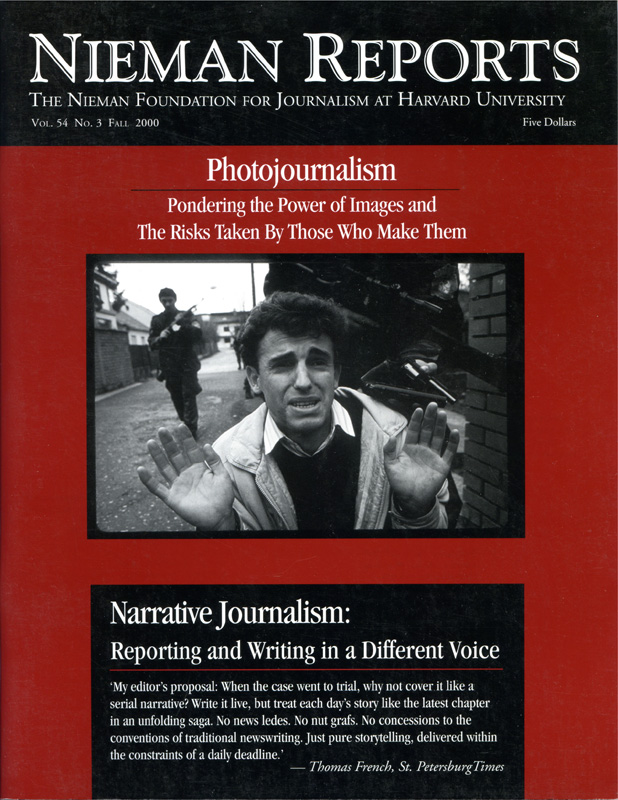ISSUE
Fall 2000

Photojournalism: Pondering the Power of Images and the Risks Taken by Those Who Make Them
James Nachtwey’s book “Inferno” is a collection of 382 photographs depicting the horrific brutality and suffering of people who are entrapped by war, famine or political unrest. Its publication offers an opportunity to reflect not only on his extraordinary and courageous career as a photojournalist but on how, in this time of visual onslaught, images such as these are absorbed and their messages acted upon.
Articles
Masthead
Publisher
Bob Giles
Editor
Melissa Ludtke
Assistant Editor
Lois Fiore
Editorial Assistant
Adam Reilly
Design Editor
Deborah Smiley
Business Manager
Cheryl Scantlebury
Cover Story
A Muslim man begs for his life as he is taken prisoner by Arkan’s Tigers during the first battle for Bosnia in March 1992. He was later thrown from a thirdstory window during interrogation. Photo by Ron Haviv/SABA.